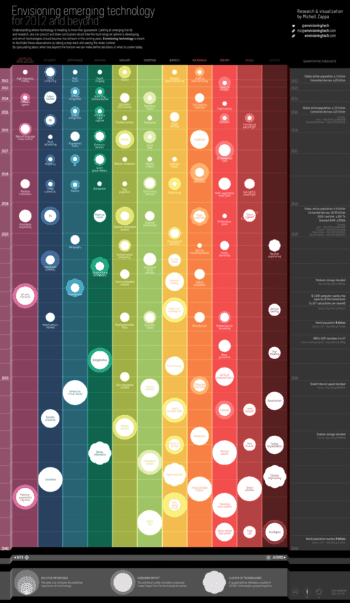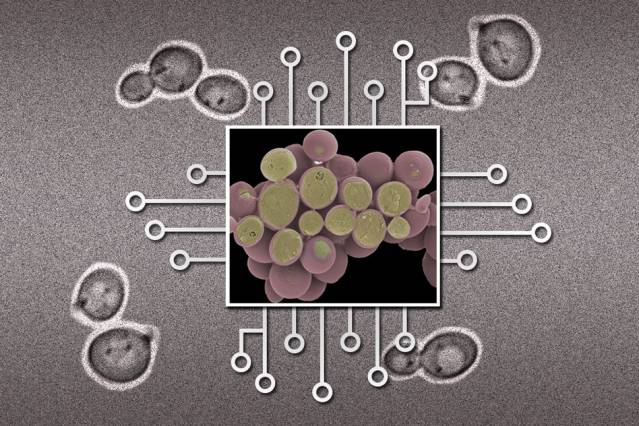
A team led by ETH Professor Yaakov Benenson has developed several new components for biological circuits. These components are key building blocks for constructing precisely functioning and programmable bio-computers.
Bio-engineers are working on the development of biological computers with the aim of designing small circuits made from biological material that can be integrated into cells to change their functions. In the future, such developments could enable cancer cells to be reprogrammed, thereby preventing them from dividing at an uncontrollable rate. Stem cells could likewise be reprogrammed into differentiated organ cells.
The researchers have not progressed that far yet. Although they have spent the past 20 years developing individual components and prototypes of biological computers, bio-computers today still differ significantly from their counterparts made of silicon, and bio-engineers still face several major obstacles.
A silicon chip, for example, computes with ones and zeros – current is either flowing or not – and it can switch between these states in the blink of an eye. In contrast, biological signals are less clear: in addition to ‘signal’ and ‘no signal’, there is a plethora of intermediate states with ‘a little bit of signal’. This is a particular disadvantage for bio-computer components that serve as sensors for specific biomolecules and transmit the relevant signal. Sometimes, they also send an output signal if no input signal is present, and the problem becomes worse when several such components are connected consecutively in a circuit.
A biosensor that does not ‘leak’
ETH doctoral candidate Nicolas Lapique from the group led by Yaakov Benenson, Professor of Synthetic Biology in the Department of Biosystems Science and Engineering at ETH Zurich in Basel, has now developed a biological circuit that controls the activity of individual sensor components using internal “timer”. This circuit prevents a sensor from being active when not required by the system; when required, it can be activated via a control signal. The researchers recently published their work in the scientific journal Nature Chemical Biology.
The Latest on: Biological circuits
[google_news title=”” keyword=”Biological circuits” num_posts=”10″ blurb_length=”0″ show_thumb=”left”]
via Google News
The Latest on: Biological circuits
- Georgia AG files suit against Biden administration for Title IX revision: 'Destroying women's sports'on April 29, 2024 at 3:43 pm
Georgia Attorney General Chris Carr filed a suit against the Biden administration for its Title IX revision that he says is "destroying women's sports." ...
- Robots can’t outrun animals. A new study explores whyon April 29, 2024 at 11:15 am
Researchers examined data from dozens of studies and found that, in almost all cases, animals could beat their robot counterparts in a footrace. CU Boulder roboticist Kaushik Jayaram hopes the study ...
- Robin Abcarian: Criminalizing homelessness is unconscionable, but is it unconstitutional?on April 29, 2024 at 11:00 am
Last Monday, the U.S. Supreme Court heard arguments about whether a small Oregon city can cite and prosecute homeless people for sleeping in public places when they have nowhere else to lay their ...
- In blow to green groups, Ninth Circuit upholds federal plan for Colorado River damon April 28, 2024 at 1:08 pm
Conservationists lost an appeal to the Ninth Circuit on Wednesday as they attempted to force the federal government to reconsider climate change studies in managing the Glen Canyon Dam and Colorado ...
- Florida seeks a stay in its wetlands permitting fighton April 26, 2024 at 10:11 am
Florida has asked a federal appeals court to put on hold a district judge’s ruling about wetlands permitting authority.
- A Va. woman wants access to two frozen embryos. Her ex-husband says no.on April 26, 2024 at 3:00 am
A judge is weighing whether a divorced woman can use frozen embryos she shares with her ex-husband under the theory that they are property that can be partitioned.
- Riley Gaines praises girls who refused to compete with trans athlete as WV takes law to Supreme Courton April 24, 2024 at 1:37 pm
Riley Gaines praised the middle school girls who refused to compete against a transgender athlete at a championship meet earlier this month.
- D.C. Circuit Petitioned to Review Certificate Extension for North Carolina Methane Gas Pipelineon April 23, 2024 at 9:27 am
Conservation groups have filed a petition in the U.S. Court of Appeals for the D.C. Circuit challenging a Federal Energy Regulatory Commission decision to extend the certificate of public convenience ...
- Why queasiness kills hunger: brain circuit identifiedon April 17, 2024 at 5:00 pm
Feelings of hunger, nausea and fullness seem to be governed by separate brain circuits, finds a study in mice.
- Fourth Circuit finds West Virginia ban on transgender athletes unconstitutionalon April 16, 2024 at 11:40 am
A divided panel found West Virginia violates Title IX by excluding transgender student-athletes from participating in the teams of their choosing.
via Bing News










